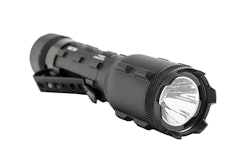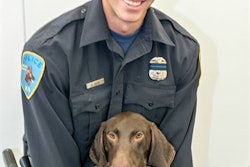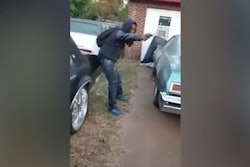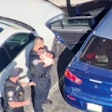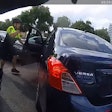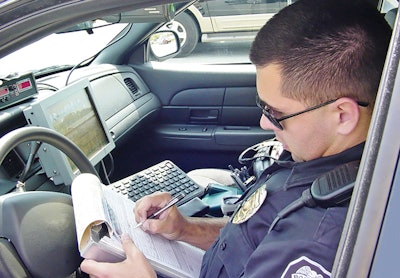 It's important to vary your routine. Don't stop at the same place or time to catch up on your paperwork. (Photo: iStockphoto.com)
It's important to vary your routine. Don't stop at the same place or time to catch up on your paperwork. (Photo: iStockphoto.com)
By now we've all seen the headlines. According to the National Law Enforcement Officers Memorial Fund, we've seen a 58% increase in officers being killed by gunfire, and a whopping 167% increase in officers being killed in ambush-style attacks for 2016. We've watched the news in horror as officers have been gunned down in Dallas, Baton Rouge, and now Iowa. Combating an ambush-style attack is difficult, but there are some simple steps you can take to put the odds in your favor.
Avoid Routine
First and foremost, avoid any type of routine. Humans are creatures of habit, and sometimes we don't even realize it. We like to do things, and be places, we are familiar with, where we feel "safe" or comfortable with our surroundings. We've all got a favorite meal break spot, a place we like to park to write reports, locations we like to run radar in, and so on.
Now think about the people you have warrants for. Where are the first places you check? Probably the places where they like to hangout: the homes of family and friends, the local bar, etc. They know we have a warrant for them, and yet they go back to the same places they always go to, sometimes at the same time every day.
We like to say there is no such thing as a routine traffic stop, and it's true. Going with that same theme, there is no such thing as "routine patrol." Get out of the rut, and avoid the routine at all costs. It's difficult because we are creatures of habit, but you have to try to break that routine.
You can start to break the routine before you even arrive at the station. Leave a few minutes early and take a different route to work to get you out of that "routine" mindset. Since some ambushes have occurred at the station, like we saw in Pennsylvania and other places, we now know that home base is no longer safe. Treat the cop shop the same as you would one of those all-night convenience stores we lovingly refer to as stop & robs.
Drive past the station and look for suspicious vehicles, people, or anything that looks out of place. Some of these attackers have "cased" the police station prior to the attack, sometimes for days. Look for anyone taking pictures or video of the station, police vehicles, or parking areas. People gathering material for their cop hating Websites like to do this, but some of those people have been involved in attacks against law enforcement too, so don't rule them out as just simple nut jobs.
Keep a Low Profile
Don't wear your uniform to and from work, and if you have a take-home car, don't park it in your driveway. Some ambush-style attacks have occurred as officers were walking into the police station, while others have occurred at an officer's home by persons who knew they were law enforcement. If you have a take-home vehicle, either park it out of sight in your garage, or down the street. There's no need to identify yourself to everyone driving by. The same holds true for taking meal breaks at home.
Some cop killers like to use the ruse of a "hot call" to get us to respond quickly to an area where they have set up an ambush for responding officers. Before getting to the location of a hot call, like a violent domestic or a shots fired call, slow down just a tad and look for something that looks out of place or looks suspicious to you. Remember, never pull up directly in front of the house where the incident is allegedly taking place.
Post Lookouts
In 2009 in Lakewood, WA, we lost four officers who were ambushed in a coffee shop. The officers "regularly" gathered at the shop to share information. If you're having an impromptu squad meeting that's taking place outside of police HQ, then you need to post a lookout. Have one officer placed in a location where he or she can observe the entrances and exits, the other officers, and have a general view of the area. This officer can be briefed later on about what took place at the meeting.
It's basic contact and cover principles. Post one officer to act as a cover officer for the other officers. The cover officer doesn't have to stand in a corner glaring at everyone who comes in the door, but he or she should be there to keep an eye on everyone and be ready to respond with force if necessary. If you do it right, the general public will think that nobody likes the cover officer.
The same holds true for meal breaks. If more than two officers are taking a meal break together, an officer needs to be posted as a lookout/cover officer. Even if there are only two of you, or even if you're eating alone, be aware of your surroundings at all times and adopt cover officer positioning. Just like when we're in the stationhouse, we tend to subconsciously lower our alertness during meal breaks and think we're "safe," when in reality we're not.
Color Coding
When it comes to feeling "safe," I want you to remember this simple color code chart. Think of a traffic light: red, yellow, and green. Green means you're good to go. You're home, the doors are locked, you know where your guns are, and your dog is taking a nap near the front door. It's a safe location.
Yellow means caution. You're heading out the front door of your house to go to work. There's no visible threat, but you're alert to your surroundings, and prepared if something should happen. It's not a state of paranoia, it's a state of alertness.
Condition red means there's an imminent threat, or the possibility of an imminent threat. An example would be a robbery alarm at your local bank. You can't see if it's an imminent threat or just another false alarm as you're driving to the location, but the possibility is always there, so your level of alertness is at its highest level. Remembering this simple color chart will help in preparing you for a possible ambush-style attack, and break you out of that routine mindset.
Rifle at the Ready
As we saw in Dallas, Baton Rouge, and now in Iowa, some of these assailants who ambushed law enforcement officers used long guns against us. We never want to be in a fair fight, we always want to have the upper hand. If the bad guy brings his fists, bring a police baton, OC, or a TASER. If he brings a knife, bring a gun. If he comes at you with a rifle, you need to have a rifle and superior training and tactics.
Every officer, regardless of rank, title, or position, needs to have a patrol rifle available to them at all times. It doesn't mean they're walking around with it slung over their shoulder 24/7, but it does mean they can get to a rifle should they need it. That means everyone from the chief on down needs to be trained and qualified to use a patrol rifle. Think back on some of these ambush attacks, or even some active shooter calls. Had the officer responded with a patrol rifle in the initial stages of the attack, would the final outcome have been different?
Just having a rifle available 24/7 is not enough. We need to have superior training and tactics. That means learning how to shoot while moving, in low light, one-man, two-man, and team moving and tactics. We're not at war with the public, but we need to be prepared and trained to go up against assailants who have some military training in their background, such as the assailant who killed five officers in Dallas.
Having a patrol rifle available to you at all times doesn't mean it's locked at the stationhouse in case you need it. It means the rifle is with you in your vehicle, in the passenger compartment, and not in the trunk of your cruiser. In other countries they keep the officer's handgun locked at police headquarters in case it's needed, and some officers have paid the ultimate price for this type of thinking in those countries, but that's not us. Keep the patrol rifle in the vehicle's passenger compartment for easy access.
Evasive Vehicle Maneuvers
In the past, and as recently as Iowa, officers have been ambushed while in their vehicles. Always leave yourself a way out when stopping at intersections, and keep your head on a swivel as this is when we're the most vulnerable. Never pull directly alongside someone, and be cautious of vehicles that pull directly alongside you. If you come under attack, and you're able to do so, hit the gas and get out of the area as quickly as possible. Getting out of the area may be something as simple as turning the corner around a building that will provide you with adequate cover.
If you come under fire while you're stuck in traffic or in a location where other cars are around you, consider ramming the other vehicles to escape to a safer location. I'm not talking about ramming innocent civilians' cars at a high rate of speed, but if you're at an intersection and need to get out, ramming a vehicle is a viable alternative to getting shot to pieces while sitting in your cruiser. You could try to exit your cruiser and use it as cover, but police cars make for very poor cover, especially against incoming rifle rounds.
Aim your vehicle toward the back trunk area, or the front engine compartment, and hit the gas. From a standing position, you can move vehicles very easily, even ones that are larger than your cruiser. Another way to think of it is to divide the car into thirds. The front engine compartment is one third. The passenger compartment is the second third, and the trunk area is the last third.
If you try to push on the center third or passenger compartment you'll be pushing against the portion that will give you the most resistance. Instead, aim for the front third (the engine compartment), or the last third (the trunk compartment).
This is similar to a PIT maneuver, where you turn into the rear quarter panel of the other vehicle and accelerate. But instead of trying to spin the other vehicle around, you're just looking to push it out of the way. Aim for the trunk or hood, keep your wheels straight as best as you can, and hit the gas. Again, this isn't something you're doing at 55 mph and should only be used in extreme emergencies.
Gain the Advantage
Combating an ambush-style attack is probably one of the hardest things to train for because they're just such random attacks where the assailant has the advantage of the element of surprise. But if you break the routine, use the color code chart to always be in condition yellow when on patrol, keep your patrol rifle handy, and train, train, train, then you can take back some of the advantage the assailant has, and put the odds in your favor.
Michael T. Rayburn has been involved in law enforcement since 1977, and is the author of five books. He is a former adjunct instructor for the Smith & Wesson Academy, and is the owner of Rayburn Law Enforcement Training. He can be reached at www.combatgunfighting.com.






